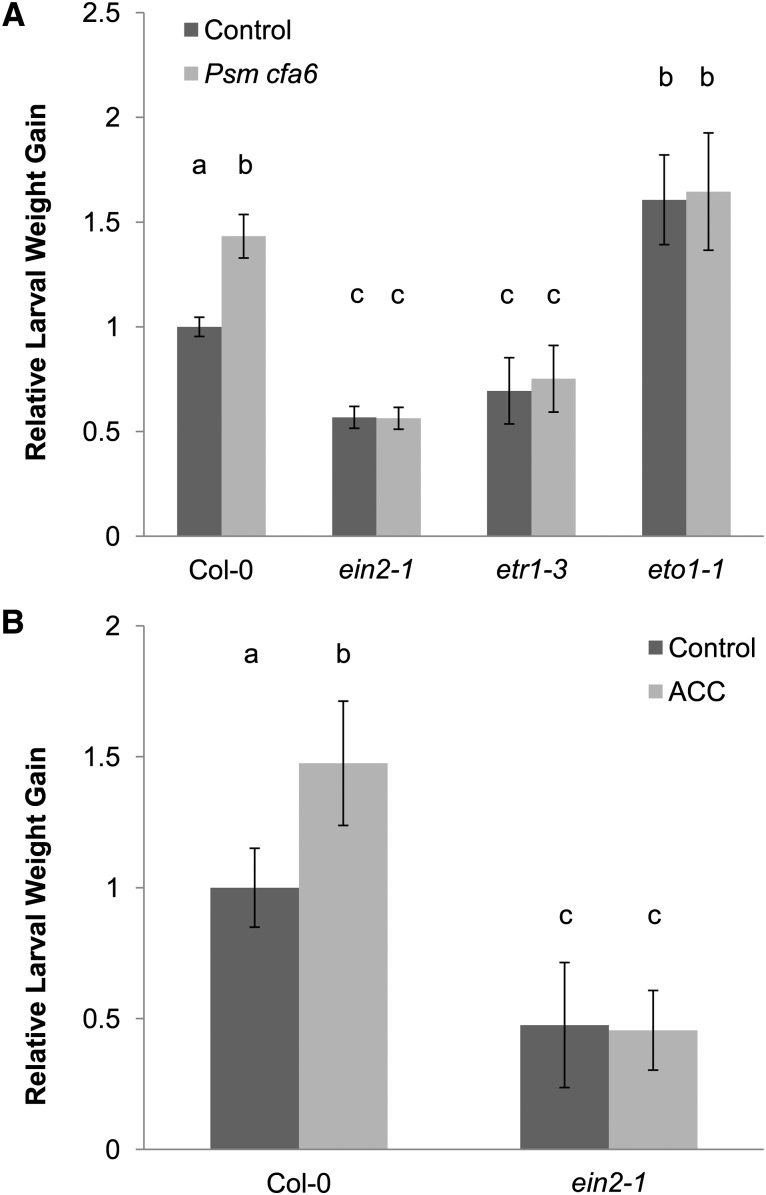Figure 2.
Pathogen-Triggered SIS to Herbivory Is Mediated via ET Signaling.
Lower Arabidopsis rosette leaves were inoculated with a control solution (dark-gray bars), Psm ES4326 cfa6 suspension (OD600 = 0.2; light-gray bars; [A]), or a 100 μM solution of the ET precursor ACC (light-gray bars; [B]), respectively. Four days later, the inoculated or treated leaves were removed and newly hatched T. ni larvae were placed on the upper rosette leaves. Larval weight gain was measured after 7 d of feeding. For each experiment, weight gain data were normalized to the weight gain of larvae feeding on mock-inoculated (A) or control-treated (B) wild-type (Col-0) plants. The bars represent the means (±se) of relative weight gain from two independent experiments with n = 36 larvae per treatment per experiment.
(A) Relative larval weight gain in wild-type (Col-0), ein2-1, etr1-3, and eto1-1 plants (ANOVA; treatment, P < 0.05; genotype, P < 0.05; treatment × genotype, P < 0.05).
(B) Relative larval weight gain in wild-type (Col-0) and ein2-1 plants (ANOVA; treatment, P < 0.05; genotype, P < 0.05; treatment × genotype, P < 0.05). Letters above the bars signify statistically significant differences among groups (Tukey, P < 0.05).

